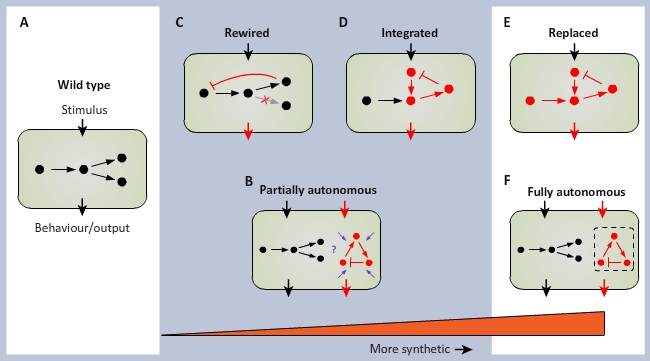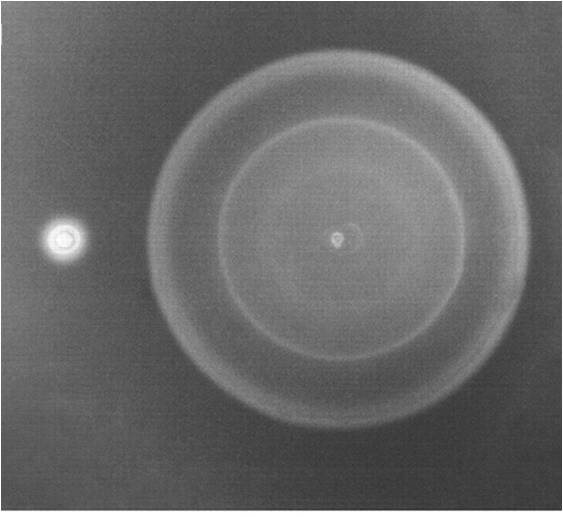Team:Goettingen
From 2012.igem.org
 | |
Deutsch  / English / English  |
 |
Welcome to iGEM GöttingenIn November 2011, most of us heard about iGEM competition for the first time. Erik, inspired by his former colleagues' enthusiastic reports, was looking for like-minded people at his new university that were willing to organize a whole project in the field of Synthetic Biology. He described the idea of the contest to anybody willing to listen. It did not take long to find five other interested students. Thus, the so called organization task force of the first iGEM team of the University of Göttingen was formed. Luckily, the iGEM competition was already well known among the University´s professors and the team found their first supporters: Prof. Heinz Neumann, head of a work group specializing in Synthetic Biology, and Prof. Jörg Stülke from the department of General and Applied Microbiology. The next task was to find a project that was interesting as well as realizable. After a lot of back and forth due to extensive discussions, Prof. Neumann presented the perfect project: "Homing Coli"! After many drawbacks, like finding a suitable laboratory to realize the project, the search for additional team members began. The new fellows were quickly found, which was the story starting point of the first iGEM team of the University of Göttingen… Below you can see our timeline. If you are interested in the iGEM competition, the BioBrick concept, and – most importantly – our project, take a look around. Here, you will find everything you need to know about "Homing Coli" and you will have the opportunity to gather knowledge about chemotaxis in general! Visit our team site to learn more about us and our supporters and advisors! And, last but not least, do not forget to check out our mascot Flash Coli! He always has some interesting stories to tell and needs YOUR help to fight the horrible phages! Feel free to browse this page! Homing Coli - a short introductionEscherichia coli is a commonly used bacterial model organism. It has lots of beneficial traits, e.g. a short generation time and it can be easily manipulated. Most E. coli strains that are used in laboratories do not exhibit high motility. The crucial element for motility is the flagellum, which is rotated by a molecular motor within the cell wall. Consequently, these are reduced in cultivated E. coli strains. Our goal is to create an E. coli strain with increased swimming motility on special agar plates. Therefore, we will overexpress regulators and parts of the E. coli flagellum in cultivated strains in order to enhance bacterial swimming ability. The fastest E. coli strains will be selected and further improved. At the same time we will then be able to create an effective motility-selection method. Now, you are probably wondering what the advantage of a fast E. coli might be. The beneficial fast phenotype can be combined with the ability of this bacterium to sense specific compounds in their environments. Chemoreceptors enable it to move towards or along gradients of such substances. We will use PCR-based site directed mutagenesis on the E. coli Tar receptor. The combination of speed and chemotaxis allows us to identify E. coli strains, which can sense interesting compounds. Thereby, an easy method for the detection of pollutants, toxins or even tumors could be provided. For detailled information see our project page Synthetic BiologySynthetic biology is an interdisciplinary scientific area that has recently developed. It links various fields of science like biology, chemistry, physics, molecular genetics, informatics and engineering. Due to this combination the relation of biological design and function can be investigated from an entirely new perspective. The previous approach was limited to the examination of a structure and its function and the attempt to explain how they correlate. Recently, the reverse strategy is applied. Biological parts are specifically designed and constructed according to a desired function. These parts are characterized by a standardized modular design that facilitates their handling. The subsequent introduction of the synthetic constructs to living cells can either cause the replacement of original cellular components or result in additional elements that act cooperatively or more or less autonomously (see fig. 1).  After Nandagopaland and Elowitz (2011). A continuum of synthetic biology. Wild-type cells (A) can be subject to two basic types of synthetic manipulation. (B) Autonomous synthetic circuits, consisting of ectopic components, may be introduced into the cell. Such circuits process inputs and implement functions (red arrows) seperate from the endogenous circuitry (black). However, unknown interactions with the host cell may affect their function (purple arrows) (C)An alternative is to rewire (red lines) the endogenous circuits themselves to have new connectivity. (D) Extending this line of synthetic manipulation, synthetic circuits could be integrated into appropriately rewired endogenous circuitry to act as sensors and to implent additional functionality. Ultimate goals of this program are to be able to design and construct (E) synthetic circuits that can functionality replace endogenous circuits or (F) fully autonomous circuits that operate independently of the cellular mileu. Nagarajan Nandagopal and Michael B. Elowitz. (2011). Synthetic Biology: Integrated Gene Circuits. SCIENCE, Vol. 333: 1244-1248. Another very important and necessary feature of biological parts is orthogonality, which means in this context that independent devices can be combined unrestrictedly. This principle derives from the area of engineering and aims to alter subsystems, without impeding others. This way cells can be modified as requested, resulting in a predictable behaviour. Among others, this technique can be beneficial for the effective production of certain substances, like biofuels or antibiotics.
|
|
| ↑ Back to top! |

|
 "
"

